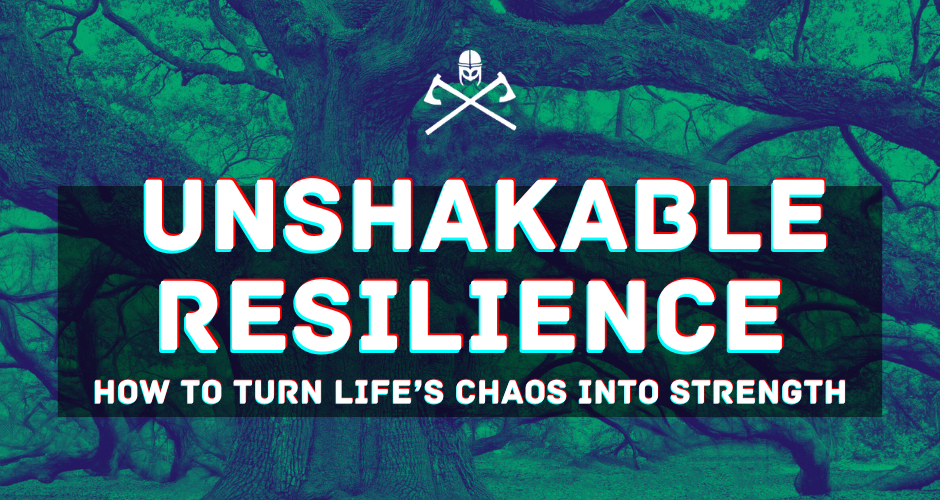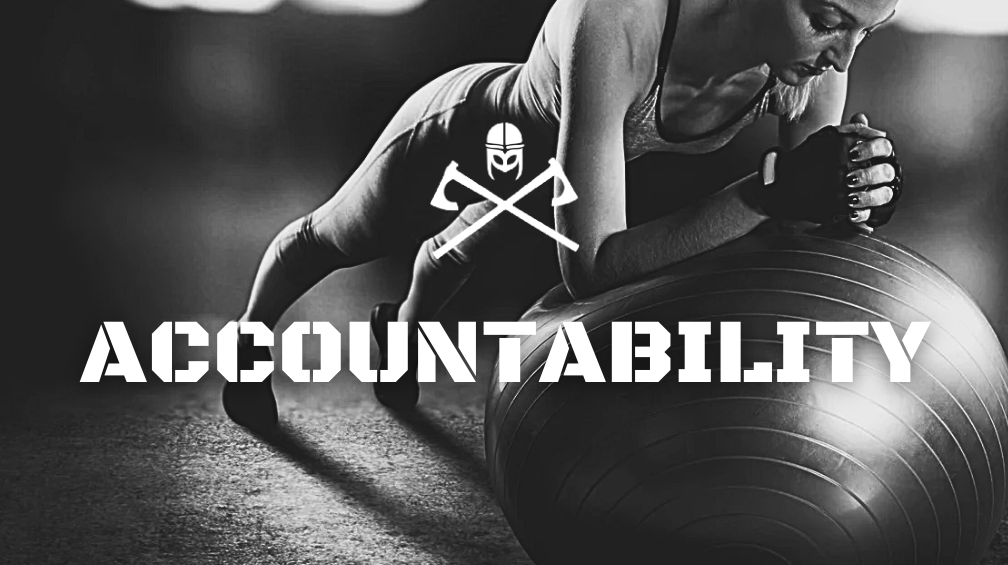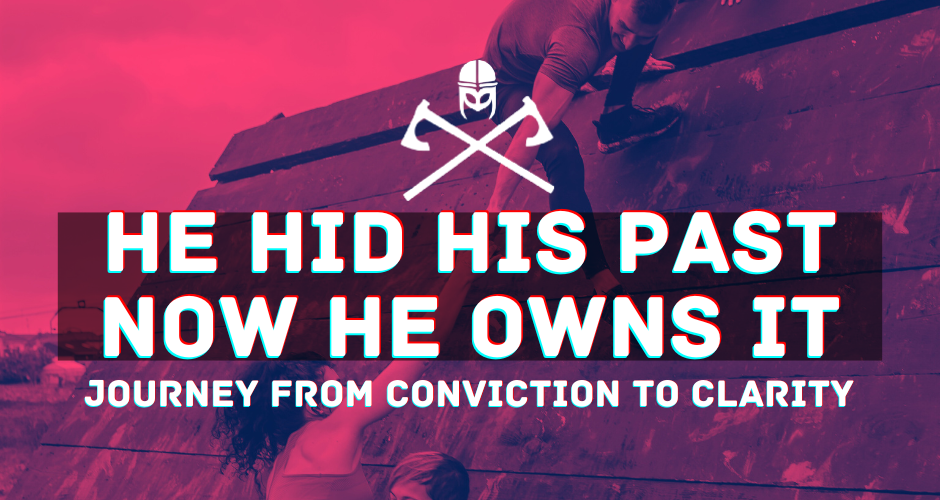
by Gene Crawford | Nov 24, 2025 | Podcast
What if heaven wasn’t a peaceful escape, but a battleground for warriors? In this episode, we explore the myth of the Einherjar, Norse warriors who trained for Ragnarok in eternal preparation. But this isn’t just myth, it’s a mindset. We connect their legendary grit to modern challenges like discipline, failure, growth, and inner strength. Through repetition, not perfection, you’ll learn to train, fall, rise, and repeat. We fuse Norse myth with samurai philosophy to help you reframe struggle as sacred. Whether in fitness, business, or daily life, this episode gives you the tools to meet your personal Ragnarok with purpose.
(more…)

by Gene Crawford | Apr 29, 2025 | Blog
When most people think of stamina, they picture athletes dripping in sweat, soldiers grinding through their last mile, or fighters still swinging when everyone else is out of gas. But the truth is, the real kind of stamina, the kind that builds empires, relationships, careers, and unshakable mindsets, isn’t loud or flashy.
It’s quiet. It’s invisible. It’s deadly.
At Warrior Mindset, we talk a lot about resilience, grit, and mental toughness. But if you’re overlooking stamina, you’re missing the trait that actually keeps you in the fight long after the motivation fades.
What Is Real Stamina?
Stamina isn’t just the ability to keep moving when you’re physically exhausted. It’s the ability to keep showing up when you’re mentally drained, emotionally worn out, and spiritually tested.
It’s the parent who keeps listening, even when they’re exhausted. It’s the business owner who keeps building, even when no one’s buying. It’s you, deciding to do the hard thing, again, after everyone else has checked out.
The people who win are not the most gifted. They’re the ones who keep going when the talented ones get tired.
Why Stamina Is Your Unfair Advantage
Here’s what no one tells you:
The world is full of people who start strong and finish nowhere.
They rely on motivation, adrenaline, or natural ability, and it burns out.
Stamina is what stays after all that fades. While others waste time restarting, you’re still moving forward.
And here’s the kicker:
Every result you want, whether it’s money, mastery, fitness, relationships, peace of mind, is on the other side of sustained effort.
🥋 3 Warrior Takeaways: How To Build Relentless Stamina
1. Train Your Frustration Threshold
Most people don’t quit because they’re weak. They quit because they can’t tolerate the feeling of sucking at something.
Start training that threshold today:
- Choose one thing every day that frustrates you, and lean into it.
- Learn a skill you’re bad at.
- Sit in silence for 10 minutes without distraction.
- Finish that boring task you keep avoiding.
You’re not training the skill, you’re training the muscle of not quitting when you’re frustrated.
2. Measure Progress by Reps, Not Results
The world is built to distract you and reward instant gratification. Stamina ignores that.
Here’s how you beat the system:
- Track how many reps you put in, not how many results you see.
- Show up when you don’t feel like it.
- Do the work, even without applause.
- Stack days, not dopamine hits.
Reps compound. Results follow.
3. Build “Micro-Stamina” Habits
You don’t build big stamina without practicing small stamina.
If you can’t trust yourself with the small battles, you won’t trust yourself with the big ones.
Start here:
- Get up when your alarm goes off, no snoozing.
- Finish every workout, even if you’re crawling.
- Keep your word, even when it’s inconvenient.
- Do what you said you would, especially when you don’t feel like it.
⚔️ Bonus Assignment: Stretch Your Quitting Point
Here’s a mental drill that quietly separates warriors from the crowd:
The next time you want to quit, don’t.
But don’t force yourself to go forever. Just stretch your quit point by 60 seconds.
- One more rep.
- One more sentence.
- One more uncomfortable conversation.
- One more minute of discipline.
That extra minute builds the muscle no one else is training: Your ability to keep going when it’s not fun, not exciting, and not convenient.
Stamina Always Outlasts Talent
At Warrior Mindset, we don’t worship overnight success or temporary brilliance. We train for the long game.
Because flashy fades. Stamina wins. And in the end, the last one standing is the one who never stopped showing up.
🔥 Want More? Get More Warrior Mindset Tools In Your Inbox
Subscribe to the Warrior Mindset Newsletter and get weekly mental training, tactics, and mindset tools straight to your inbox, so you can sharpen your edge and stay in the fight longer than anyone else.

by Gene Crawford | Apr 28, 2025 | Podcast
Life doesn’t care about your plans—it throws curveballs. In this episode, we dive into the mindset required to turn adversity into strength. From a hilarious text mishap to a personal story involving my 75-year-old mother stranded on the road, we explore how family, grit, and perspective fuel resilience. Drawing insights from “Fight Right” and SEAL training, we break down how real toughness is forged—through chaos, not comfort. With strategies like journaling, kihon-level discipline, and embracing discomfort, we arm you with tools to stay grounded, push forward, and grow stronger through life’s storms. This is the warrior’s path.
(more…)

by Gene Crawford | Apr 2, 2025 | Blog
There’s a moment in every fighter’s journey when they step into the ring alone. The crowd fades. The coach’s voice is a distant echo. The opponent in front of them is real, but the real battle? It’s within.
That moment, the split second before the first strike, is where accountability lives. No one can throw your punches for you. No one can force you to move your feet. It’s you, and only you.
But here’s the truth: No warrior walks the path alone. Whether you’re a martial artist, an entrepreneur, or someone striving for personal growth, accountability is the unseen force that keeps you sharp, disciplined, and evolving.
Self-Management: Becoming Your Own Coach
Self-accountability starts in the dark, when no one is watching, when the comfort of excuses calls your name, when the easy road tempts you to veer off course.
So how do you stay on track?
- Set Clear Expectations – Like a kata in Karate, your goals need structure. Instead of vague aspirations, define your path with precision. “I want to train harder” becomes “I will hit the dojo five days a week and log my progress.”
- Track Your Progress – Whether it’s a notebook, an app, or a whiteboard in your gym, writing things down makes you accountable to yourself. When you see the numbers, the reps, and the effort laid out, excuses lose their power.
- Embrace Discipline Over Motivation – Motivation is fleeting. Discipline is built. The best warriors don’t wait to feel inspired—they train because it’s who they are. They lace up their gloves whether they feel like it or not.
- Face the Hard Truths – Self-awareness is brutal but necessary. If you skip a training session, own it. If you make excuses, call yourself out. Growth comes from honesty.
But even the strongest self-discipline has limits. That’s why every warrior needs a coach.
Who Coaches You? The Role of a Mentor in Accountability
Even the best fighters have a coach in their corner. But a coach isn’t just someone who yells at you to train harder, they see what you can’t, push you beyond your limits, and call you out when you’re slacking.
A great coach:
- Challenges you without breaking you.
- Sees your blind spots and forces you to confront them.
- Holds you accountable when your mind starts making excuses.
- Offers wisdom gained through experience.
Your coach might be a martial arts instructor, a business mentor, or even a mindset coach. The key? Find someone who demands your best, not someone who makes you comfortable.
Finding a Coach or an Accountability Partner
Not everyone needs a formal coach. Sometimes, an accountability partner, a training partner, a friend, or a mastermind group—can serve the same purpose.
Here’s how to find the right person:
- Look for someone who has what you want – If they’ve already achieved what you’re chasing, they understand the path.
- Seek brutal honesty – A good accountability partner doesn’t just encourage you; they call you out when you slip.
- Set clear expectations – “Let’s hold each other accountable” is vague. “We check in every Friday and review progress” is specific.
The Warrior’s Code of Accountability
Accountability isn’t about guilt or punishment. It’s about discipline, growth, and commitment to the path. A warrior doesn’t make excuses, they find solutions. A warrior doesn’t hide from failure, they learn from it.
So, ask yourself:
- How well do you self-manage?
- Who holds you accountable?
- What’s your next step in finding a coach or partner?
Because at the end of the day, no one will fight your battles for you. But the right accountability, whether from within or from a coach, will make sure you never step into the ring unprepared.
Now, are you ready to level up?

by Gene Crawford | Mar 24, 2025 | Podcast
What does it take to turn a felony conviction into a story of triumph? In this powerful episode, Derek Tsuboi opens up about his transformation—from legal struggles and hidden truths to Spartan race glory and entrepreneurial success. With raw honesty, he shares how embracing authenticity, enduring hardship, and redefining failure led him to reclaim his life. Don’t miss this exclusive conversation about resilience, redemption, and the power of owning your story.
(more…)





